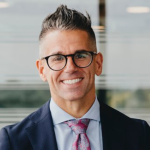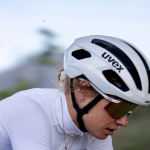L.L.Bean and the National Park Foundation (NPF), the official charity of America’s national parks, announced tremendous progress in a year-long effort to increase outdoor recreation among families and introduce more children to America’s national parks than ever before.
Nearly 350,000 stories, ideas and photos of outdoor experiences have been shared as part of the Million Moment Mission, an initiative to encourage outdoor activity as a way to support the National Park Foundation. For every outdoor moment shared this year, L.L.Bean will donate a dollar – up to $1 million to NPF’s “America’s Best Idea” program.
The announcement was made following a gathering Tuesday of stakeholders for a meeting with Interior Secretary Ken Salazar for a discussion on the President’s America’s Great Outdoors Initiative at L.L.Bean’s Discovery Park in Freeport, ME.
To provide a further boost to the program, L.L.Bean announced that in addition to funds raised through online sharing and participation in outdoor events such as the 100th Anniversary Hometown Celebration in July, the company will also donate a dollar to the National Park Foundation for every L.L.Bean purchase made in stores or online from June 29 July 8.
“As we kicked off our 100th Anniversary year, we set a goal to reignite America’s love of the outdoors,” said Chris McCormick, CEO of L.L.Bean. “We are thrilled to see the passion and enthusiasm for the outdoors that people have shared with us. Thanks to these engagements, we are nearly halfway toward our goal of contributing a million dollars to the National Park Foundation.”
“L.L.Bean’s commitment to engaging all Americans and particularly our country’s youth with their national parks is inspiring,” said Neil Mulholland, President and CEO of the National Park Foundation. “And Americans have responded with excitement to their Million Moment Mission, demonstrating the importance of protecting and preserving these special today and for all future generations.”
The funding from L.L.Bean’s Million Moment Mission will help to connect diverse, underserved and under-engaged audiences in local communities to national parks. Examples of programs made possible through L.L.Bean funding to the 2012 America’s Best Idea grants include:
- Acadia National Park, Maine: Through the Schoodic Education Adventure program, middle school children and their teachers participate in a 3 4-day park science adventure where participating students map study sites with GPS units and digital cameras and make metric maps in SERC's computer lab. The scientific process and findings are synthesized and shared through student photo journalism projects and podcasts that children create for their peers.
Assateague Island National Seashore, Maryland: Through the Assateague Adventure Academy, local elementary and middle school students will be exposed to hands-on science and technology learning in the park’s natural classroom in summer programs and after-school programs during the school year. - Boston Harbor Islands, Massachusetts: Underserved youth from local communities participate in ranger and chaperone led day and overnight park visits where they will develop “How-to” materials based on their own park adventures ultimately creating the “How to Camp Like a Kid” series which will be distributed to community youth groups inspiring more park visits.
- El Camino Real, New Mexico: El Camino Real de los Tejas National Historic Trail Interactive Videoconference reaches over 1,000 students annually via a live-stream videoconference that connects classrooms across the state. Video presentations are delivered in many formats, including live performances, pre-recorded video skits, and PowerPoint and slide presentations. Through the America’s Best Idea grant, participants will develop a curriculum, materials and stewardship activities to educate 7th graders in underserved communities. Additionally, three local schools will be able to learn from this curriculum, take part in a volunteer trail-stewardship project, and participate in the interactive videoconference. The developed curriculum and materials will be made available free-of-charge, for future use, to all schools participating in the program.















